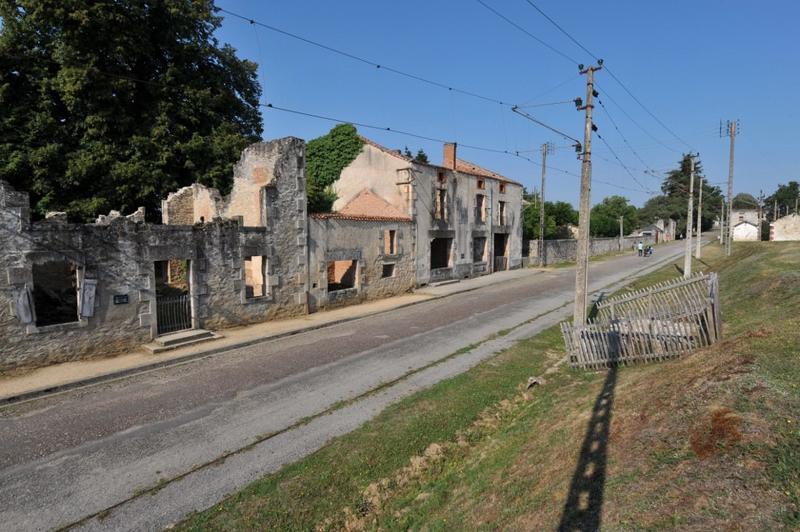 A file photo taken on Aug 30, 2013 shows the entrance of the martyr village of Oradour-sur-Glane, central France, where 642 citizens including 500 women and children were killed locked up in a church intentionally set on fire by a SS division on June 10, 1944. (THIERRY ZOCCOLAN / AFP)
A file photo taken on Aug 30, 2013 shows the entrance of the martyr village of Oradour-sur-Glane, central France, where 642 citizens including 500 women and children were killed locked up in a church intentionally set on fire by a SS division on June 10, 1944. (THIERRY ZOCCOLAN / AFP)
French police are investigating after apparent Holocaust-deniers daubed vile graffiti on a wall in a village that was the scene of one of the most horrific atrocities committed by Nazi Germany during World War II.
Oradour-sur-Glane was the scene of a mass killing on June 10, 1944 in which members of Nazi Germany's Schutzstaffel military organization executed 642 villagers, mainly women and children
The vandalism in Oradour-sur-Glane, which is near Limoges in central France, prompted Justice Minister Eric Dupond-Moretti to promise on the weekend that those responsible will be found.
He tweeted: "Shame on those who did this. All will be done to find and judge those who committed these sacrilegious acts."
The Guardian newspaper reported that village officials hastily erected a tarpaulin cover over the graffiti, which was found on Friday.
ALSO READ: Thousands rally around Holocaust survivor in Milan
The regional newspaper Le Populaire du Centre reported that the word "liar" had been scrawled on a wall at the entrance to the village's center for remembrance and that the word "martyr" in a dedication to its being a "Martyr village" had been painted over.
The village was the scene of a mass killing on June 10, 1944 in which members of Nazi Germany's Schutzstaffel military organization, which was known as the SS, executed 642 villagers, mainly women and children, during a four-day rampage that was thought to have been in retribution for the kidnapping of a German soldier by the French resistance.
Many of the victims more than 76 years ago were herded into a church and into barns that were set alight.
It was the largest massacre of French civilians during the war.
Ruins preserved
Many of the men who were murdered were shot in the legs before being torched.
In the 1950s, 65 former soldiers from among the 200 thought to have taken part were charged in connection with the atrocity. Twenty-one went on trial but most were subsequently freed after claiming to have been forced to do what they did.
The German commander of the unit, a General Heinz Lammerding, died a free man in 1971.
The ruins of the village have been left as a memorial to those who perished.
France's Interior Minister, Gerald Darmanin, described the vandalism as "abject filth", while Prime Minister Jean Castex said it "dirties the memory of our martyrs". President Emmanuel Macron said it was "unspeakable".
Darmanin added that the desecration was akin to "spitting on the memory of our martyrs".
READ MORE: Holocaust survey exposes gaps in Austrians' knowledge
The BBC reported that Philippe Lacroix, the mayor of Oradour-sur-Glane, said: "We know what happened here but obviously there are always people who try to tell lies."
The newspaper Le Figaro said Lacroix also said the name of a well-known Holocaust denier had been sprayed on the wall.
The French commercial radio station RTL noted that politicians from across the political spectrum in France were united in condemning the graffiti.


